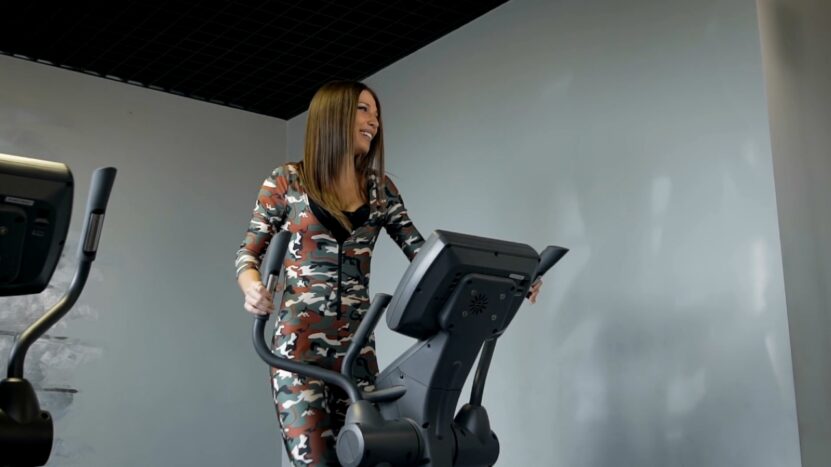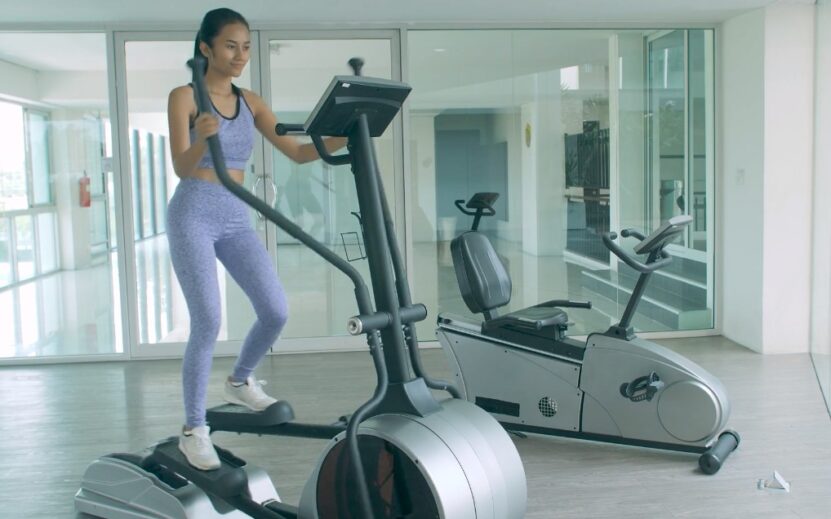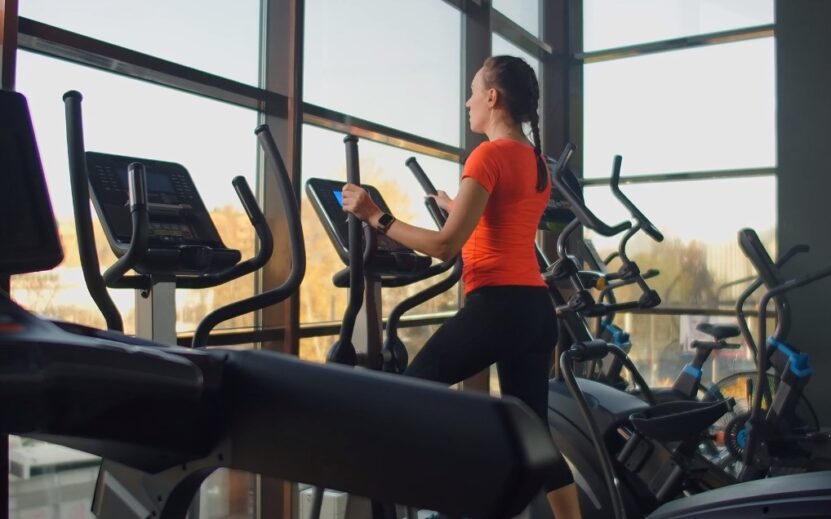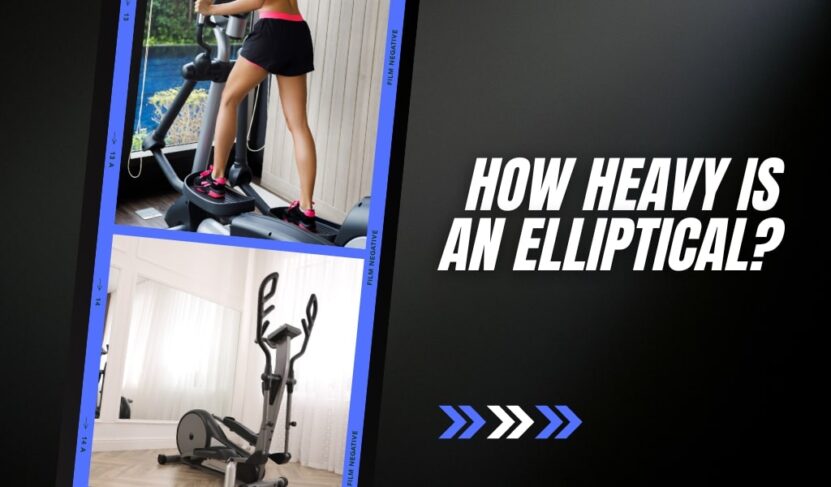Whether you’re a fitness enthusiast looking to level up your home gym or a gym owner seeking to expand your equipment offering, one question that might come to mind is, “How much does an elliptical weigh?” While this might seem like a simple question, the answer is a bit more complex than you might imagine.
In this comprehensive blog post, we will explore the various factors that contribute to the weight of an elliptical, delve into the average weight ranges for different elliptical models, and discuss how these differences impact usability, stability, and overall performance. So, buckle up and join us as we unravel the elliptical weight mystery.
Understanding Elliptical Weight and Its Importance

Before we dive into the numbers, let’s understand the factors that contribute to an elliptical’s weight:
- Frame Material: The frame is the primary structure of the elliptical and plays a significant role in determining its weight. Most of them have frames made from steel or aluminum. Steel frames are heavier but more durable, while aluminum frames are lighter but may be less sturdy.
- Flywheel Weight: The flywheel is responsible for generating resistance and maintaining the smoothness of your workout. Heavier flywheels provide greater resistance and a smoother stride, but they also add to the overall weight of the machine.
- Size and Design: The overall size and design of an elliptical, including the length of the stride and the type of drive system (front, center, or rear), can impact its weight.
- Additional Features: Added features such as an adjustable incline, built-in speakers, or touchscreen consoles can also contribute to the weight of an elliptical.
Why Elliptical Weight Matters
The weight of an elliptical can impact several aspects of your workout experience, including:
- Stability: Heavier ones generally offer greater stability, ensuring a more secure and comfortable workout.
- Portability: If you need to move it regularly, a lighter model might be a better choice for you.
- Floor Support: The weight may also affect the type of flooring you need to protect your floors from damage.
Weight Ranges and Categories
- Compact and Folding Ellipticals: These are designed for space-conscious users and generally weigh less than full-sized models. They typically have smaller frames and lighter flywheels. These can weigh between 80 and 120 pounds (36-54 kg).
- Mid-Range Home: These strike a balance between size and functionality, offering a variety of features and a smooth, comfortable workout experience. They generally weigh between 150 and 250 pounds (68-113 kg).
- High-End Home and Commercial: High-end homes and commercial ones are built with more robust materials and offer advanced features, resulting in a heavier weight. These can weigh between 250 and 400 pounds (113-181 kg).
- Adaptive Motion Trainers (AMT): Adaptive Motion Trainers are versatile, multi-functional machines that can simulate a range of movements, such as walking, running, and climbing. Due to their sophisticated design and added features, AMTs can weigh between 300 and 500 pounds (136-227 kg).
Tips for Choosing the Right One

- Assess Your Space: Consider the amount of space available in your home or gym, as well as any floor support requirements. This will help you determine the appropriate size and weight of it.
- Consider Your Fitness Goals: Evaluate your fitness goals and workout preferences to determine the right weight for you. For example, if you’re seeking a more challenging workout with higher resistance levels, you may opt for a heavier one with a larger flywheel.
- Factor in Portability: If you plan on moving it frequently, a lighter, compact model might be a better choice. Keep in mind that some ellipticals come equipped with transport wheels, which can make moving them easier, regardless of their weight.
- Evaluate Additional Features: Consider the added features that come with different ellipticals, and how they may impact the overall weight of the machine. For instance, if you desire an adjustable incline or a sophisticated console, you may need to be prepared for a heavier machine.
- Test Drive Before You Buy: Whenever possible, it’s a good idea to test out different machines at a local fitness store or gym. This will give you a feel for the machine’s stability, comfort, and overall performance, allowing you to make a more informed decision based on the elliptical’s weight and other factors.
Elliptical Machine Weight vs. Other Fitness Equipment
They are a popular choice for home workouts due to their low-impact, full-body workout capabilities. One factor that people consider when purchasing an elliptical machine is its weight. The weight can affect its stability and portability, as well as its overall durability and quality. Compared to other fitness equipment, such as treadmills and stationary bikes, elliptical machines tend to be heavier. This is because they have a larger frame and typically include more features and components.
While a lightweight elliptical machine may be more portable and easier to move, it may not be as stable during use. On the other hand, heavier machines are often more durable and can provide a more stable workout experience. They may also have more advanced features, such as incline capabilities or interactive consoles, which can add to their weight. When comparing the weight of these machines to other fitness equipment, it’s important to consider your individual needs and preferences.
If you plan on moving it frequently or have limited space for storage, a lighter option may be more suitable. However, if stability and durability are your top priorities, a heavier elliptical machine may be a better investment in the long run.
Maintenance and Weight Considerations
Weight distribution on this machine is a crucial factor that can affect your workout quality. Most of them have a front-drive or rear-drive system that determines where the weight is concentrated. Front-drive ellipticals have the flywheel at the front, while rear-drive ellipticals have the flywheel at the back. Ones with rear-drive systems tend to distribute the weight evenly, which makes them more stable during workouts.
Additionally, they have a longer stride length that can help you work out different muscle groups. However, they are usually bulkier and heavier than front-drive ellipticals, which can make them more difficult to move. On the other hand, front drives are usually lighter and more compact, making them ideal for small spaces. However, the weight distribution is focused toward the front, which can make the machine less stable during workouts, especially at higher resistance levels.
They also tend to have a shorter stride length, which may limit your workout options. It’s important to consider the weight distribution and how it affects your workout. If stability and versatility are important to you, a rear-drive elliptical may be a better option. However, if space is a concern, a front-drive one may be more suitable.
Assembling Your Elliptical
When assembling your elliptical, it’s important to follow the manufacturer’s instructions closely. Keep in mind that the weight of the various components can make assembly challenging, so it’s a good idea to have a partner help you if possible.
Regular Maintenance
Maintaining it properly can help prolong its lifespan and ensure optimal performance. Regularly check for loose bolts, frayed cables, and other signs of wear and tear. Lubricating moving parts as recommended by the manufacturer can also help reduce friction and minimize the risk of damage.
Moving and Storing
When moving or storing your elliptical, be mindful of its weight, and enlist help if needed. Use caution when lifting or maneuvering the machine to avoid injury. If you need to store your elliptical, choose a location with adequate space and a stable, flat surface to prevent damage or accidents.
FAQs

Do compact ellipticals provide a good workout despite their lighter weight?
They can still provide an effective workout, although they may not offer the same level of stability or smoothness as heavier models. For those with limited space or portability needs, this may be a suitable option.
Are there any weight restrictions for using an elliptical?
Most of them come with a specified maximum user weight, which can range from 250 to 400 pounds (113-181 kg) or more. It’s important to choose one with a weight capacity that can accommodate your needs to ensure safety and optimal performance.
How does the elliptical’s weight affect the type of flooring I need?
Heavier ones may require more robust flooring to protect your floors from damage. Consider using a protective mat or investing in high-quality flooring that can withstand the weight of your machine.
Can I replace a lighter flywheel with a heavier one on my elliptical?
Replacing a flywheel can be challenging and may void your warranty. If you desire a heavier flywheel, it’s best to consider purchasing a new one with the desired specifications.
Are commercial ellipticals always heavier than home ellipticals?
They are generally built with more robust materials and offer advanced features, resulting in a heavier weight. However, some high-end versions for the home can weigh as much as commercial machines.
Conclusion
Understanding the weight of this machine is crucial when it comes to choosing the right model for your needs, ensuring optimal performance, and maintaining your machine over time. The weight of an elliptical can range from around 80 pounds (36 kg) for compact models up to 500 pounds (227 kg) for advanced commercial machines, depending on factors like frame material, flywheel weight, and added features. To make the best choice for your needs, consider factors such as your available space, fitness goals, and desired level of portability.
Test drive different models when possible, and prioritize proper assembly and maintenance to ensure the longevity and safety of your elliptical investment. By delving into the complex world of elliptical weights, you can make an informed decision that will support your fitness journey and enhance your workout experience for years to come. Happy exercising!

